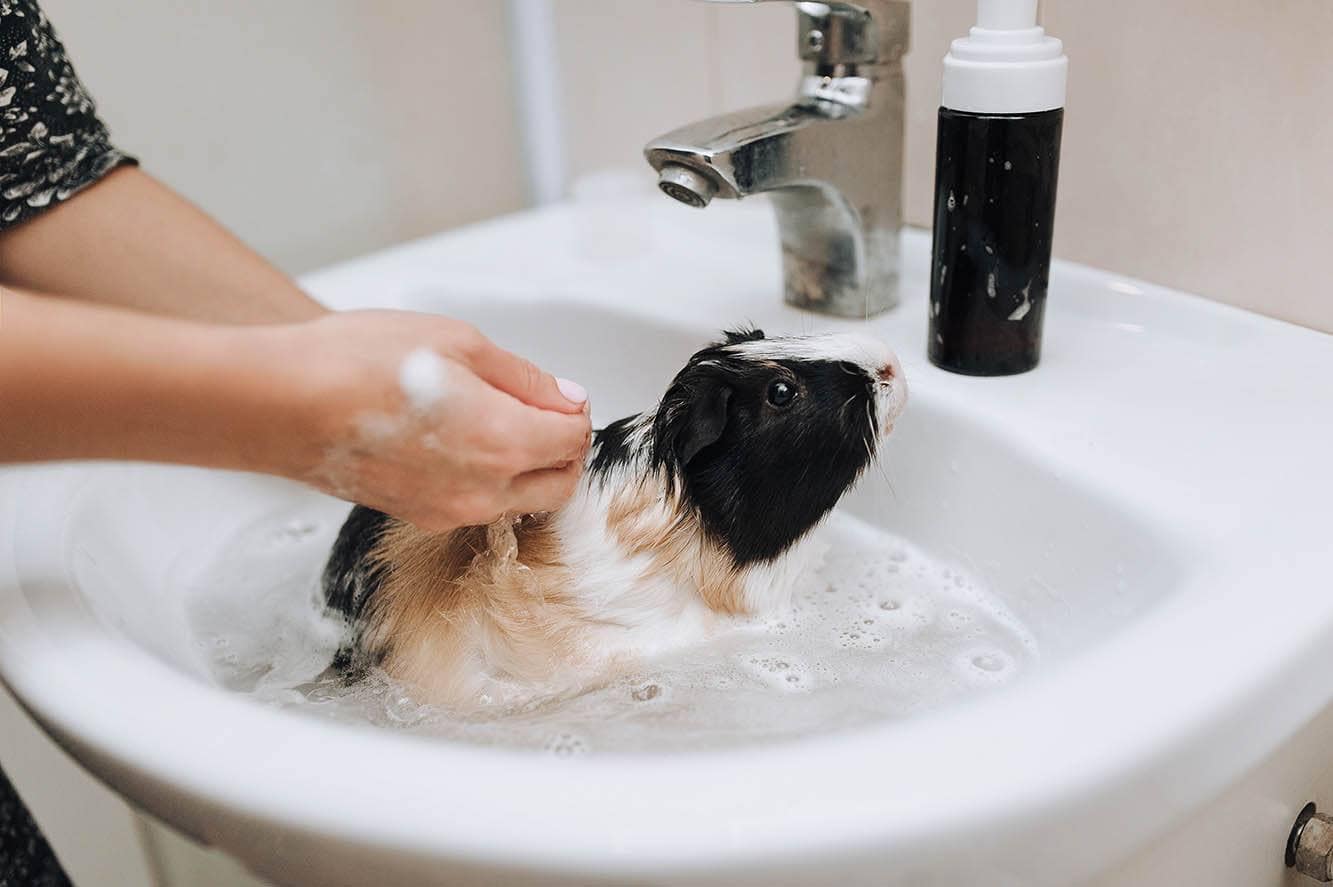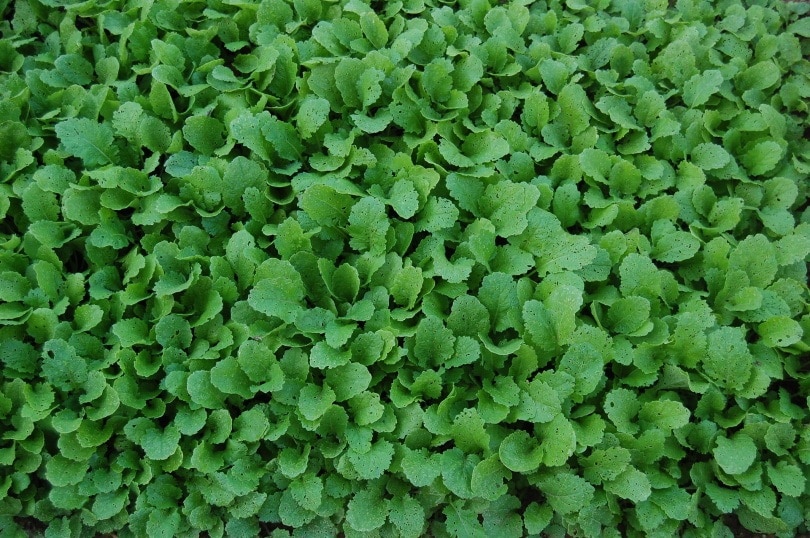
Click to Skip Ahead
Guinea pigs are herbivores. More precisely, their wild diet generally consists of grass and other wild plants that they can forage. In captivity, their diet should closely replicate that of their wild diet, with owners allowing cavies to forage on grass and some weeds and plants while also being given hay. To add variety and to ensure that a guinea pig is getting all of the required vitamins and minerals in their diet, owners can feed greens as well as the occasional fruit and vegetable-based treats.
But, not all vegetables are considered safe, while some should only be fed occasionally. Turnip greens, which are the parts of the plant that grow above the ground, should only be fed to Guinea pigs from time to time. Like the turnips themselves, turnip tops are high in oxalates which can contribute to painful bladder stones.
The Guinea Pig Diet
Guinea pigs traditionally come from the Andes mountains of Peru and Argentina, but they were domesticated and reared as a food source throughout South America before spreading across the globe, both as pets and as laboratory test animals. In the wild, they are foragers. They would eat the grass and wild plants of the Andes mountains. They would never eat meat, not even scavenged meat, and would rarely eat fruit or vegetables.
Pet guinea pigs need a diet that is similar to that of their wild counterparts, although it has been adapted slightly to benefit piggies and their humans. They can still be allowed to graze on grass, but this is typically supplemented with good-quality grass hay. They can be allowed to feed on wildflowers and weeds, like dandelion greens, but are also given greens and vegetables to ensure that they receive the necessary vitamins and minerals. They are still not fed meat, however, because their digestive system is unable to process the meat and it can actually make them sick.
The vast majority of a guinea pig’s diet should consist of grass and hay, with only 10% to 15% of their diet being fresh greens and vegetables. This equates to around one teacup full of suitable vegetables a day. Experts recommend that this daily allowance be split in two and that each vegetable portion should consist of half a dozen safe greens and other safe vegetables.
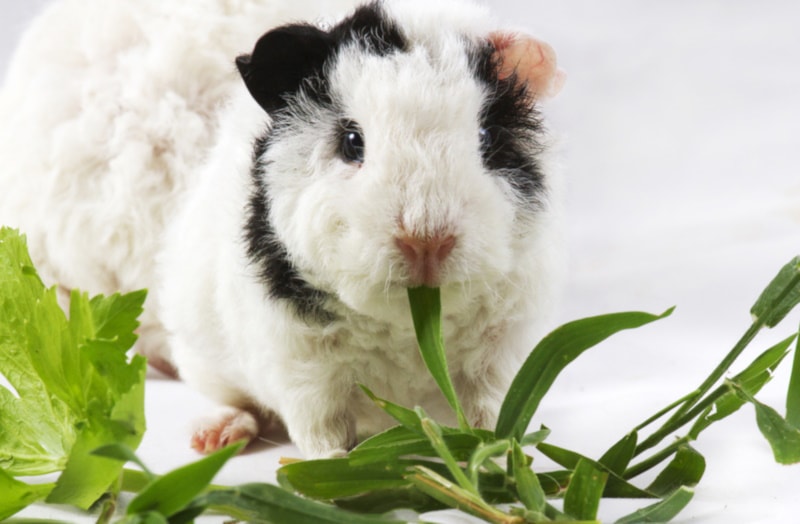
Can Guinea Pigs Eat Turnip Greens?
In the wild, piggies wouldn’t eat root vegetables. They would rarely come across this type of plant and, even if they did, they wouldn’t be able to dig up the root. However, they would be more likely to eat the plant above the root. As such, many owners question whether it is okay to feed their guinea pigs ingredients like carrot tops and turnip greens.
While carrot tops are considered generally safe and can be fed regularly, turnip greens are a different proposition. They do have several health benefits, especially since they are high in vitamin C, but because they contain oxalates, the volume of turnip greens in a guinea pig’s diet should be limited.
The Benefits of Turnip Greens
Turnip greens do have health benefits for your guinea pig. Specifically, their benefits include:
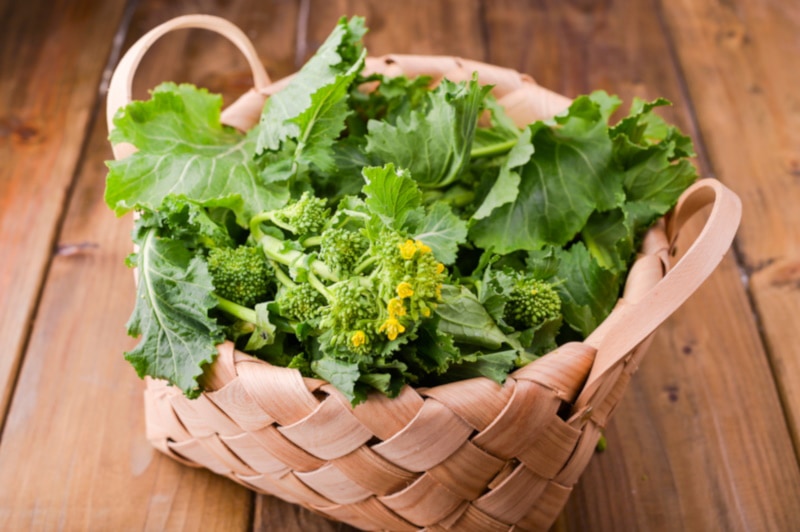
The Dangers of Turnip Greens
While turnip greens do offer several health benefits to piggies, there is such a thing as too much turnip.
Turnips contain oxalates, which are natural compounds that are commonly found in fruit as well as vegetables. Oxalates bind minerals, like calcium, which will lead to kidney or bladder stones if high concentrations of oxalates are fed. Kidney stones are painful to pass, and if they grow too large, it may be impossible to pass the stones naturally, meaning that your guinea pig may need surgery to help remove them.
How to Feed Turnip Greens to Guinea Pigs
Turnip greens can be fed to guinea pigs, but they should be fed in moderation. You can feed a small handful once or twice a week, but not more than this. The greens do not need cooking, but they should be washed thoroughly to remove any toxins and chemicals. Start with a smaller amount, perhaps just a single length of green, and see how your guinea pig handles it. Look for diarrhea and other stomach problems and stop feeding this ingredient immediately if your pet does experience any adverse reactions.
Top 3 Tips to Help Keep Your Guinea Pig Healthy
A proper diet is a key component to keeping a healthy guinea pig. And while a diet that consists primarily of grass and hay might sound easy to manage, it doesn’t take much to throw the dietary balance off. Below are three tips to help you ensure your guinea pig’s diet is as healthy as possible.
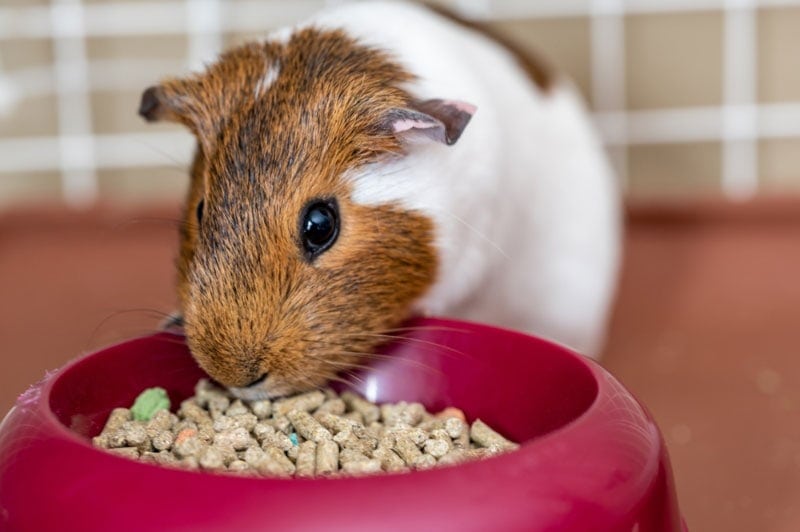
1. Feed Guinea Pig Pellets Every Day
Guinea pig pellets are hay-based pellets that are fortified with vitamin C. They help ensure your piggie is getting enough of this essential vitamin that it can’t synthesize itself as well as other essential nutrients. Feed a spoonful of pellets each day, and ensure that the pellets are all the same, rather than a mix of textures and tastes, otherwise, your piggie may pick its favorites and leave the rest.
2. Choose the Right Type of Hay
Hay makes up 80-85% of your guinea pig’s diet, so it needs to be good quality hay. Unless your vet has advised it, avoid alfalfa hay and feed timothy or other types of grass hay instead. You can’t feed too much hay and you shouldn’t be surprised if your cavie is constantly munching and grinding on its hay supply.
3. Monitor Oxalates
Oxalates are found in fruit and vegetables, but too much can cause urinary tract stones. This means you need to monitor everything you feed your guinea pig and feed those vegetables that are considered high in oxalates in moderation.
Can Guinea Pigs Eat Turnips?
The root of the turnip is the section that humans generally eat, and it has similar nutritional content to the turnip greens. It also has similar rules when it comes to feeding time. You can give a small amount of turnip occasionally but don’t overfeed this vegetable.
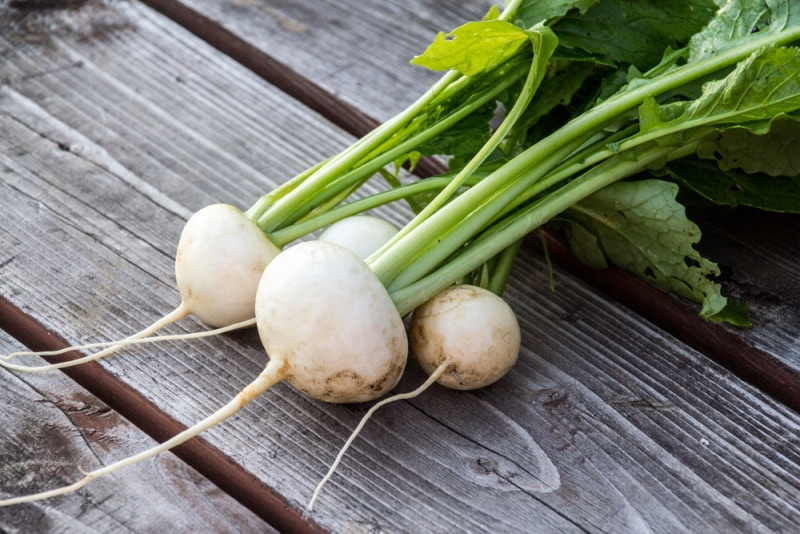
Can Guinea Pigs Eat Collard Greens?
Collard greens are rich in vitamins A, C, and K, and are considered a good addition to a guinea pig’s diet. As with all vegetables, it is best to feed a variety and offer a selection of different vegetables over time, but collard greens are a good addition to that roster.
Conclusion
Guinea pigs have very specific dietary requirements. 80-85% of their diet should consist of hay and grass. They should also be given a spoonful of hay pellets each day, and the remainder of their diet can consist of leafy greens and vegetables. Feed a good variety of different vegetables and always keep track of calcium, phosphorus, and oxalate levels of the veggies you do serve.
Turnip greens are a good addition because of their high vitamin C content, but they do contain oxalate so the amount you feed should be limited to a small handful once or twice a week.
Featured Image Credit: jjcsjoao, Pixabay





